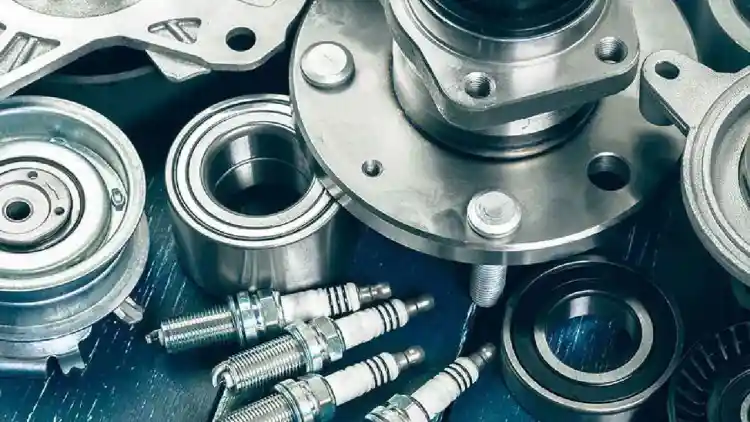- Introduction to Car Switch Operations
- How to Switch Gears Properly
- Understanding Car Switch Systems
- Avoiding Common Car Switch Mistakes
- Tips for Better Car Control
- FAQ
Mastering the art of car switch operations is a vital skill for all drivers, whether you’re cruising with an automatic transmission or navigating a manual gear system. Gear shifting is more than just a mechanical task; it's about timing, precision, and understanding your vehicle’s design. In this guide, we’ll explore everything you need to know about car switches, from step-by-step tutorials to troubleshooting, driving tips, and common mistakes to avoid.
Introduction to Car Switch Operations
Cars have evolved significantly over the years, but one thing remains constant—understanding how to shift gears efficiently is an essential part of driving. Whether you're using a clutch pedal for manual cars or relying on automatic systems, proper gear operation can enhance your driving experience and extend your vehicle's lifespan. Beginners and experienced drivers alike will benefit from refining their car switch skills.
How to Switch Gears Properly
Switching gears doesn’t have to be intimidating. With practice and understanding, anyone can master it. Below, we break down how to handle both manual and automatic transmissions effectively.
Step-by-Step Instructions for Manual Cars
Manual cars require direct driver input to shift gears. Here are the essential steps:
Press the Clutch Pedal:Firmly press the clutch pedal to disengage the engine while you prepare to shift gears.
Use the Gear Shift Lever:Move the gear stick to the appropriate gear based on your speed and driving needs, such as shifting from 1st to 2nd gear.
Release the Clutch Gradually:Slowly release the clutch pedal while gently pressing the accelerator. This prevents the vehicle from jerking or stalls.
Repeat as Necessary:As your speed changes, continue shifting higher or lower gears.
Pro Tip:Familiarize yourself with the driving conditions to understand when each gear needs to be used. Practice in an empty area to build confidence.
Operating Automatic Transmission Cars
Automatic gear systems simplify the process:
Gear Selector Basics:Use the gear selector for driving ('D'), reversing ('R'), parking ('P'), or neutral ('N') position as needed.
No Clutch Pedal:Unlike manual cars, automatics don't require clutch inputs. Simply control the brakes and accelerator.
Tackle Hill Stops:For steep inclines, use the parking brake while switching for extra safety.
Tip for Electric Vehicles:Electric cars often combine automatic transmission features with regenerative braking systems. Check your vehicle's manual for optimized shifting.
Keys to Smooth Gear Changes
Improve your gear-switching technique using these important tips:
Monitor Engine RPM:Avoid switching gears at high RPMs to ensure smoother transitions.
Prepare for Stops:When slowing down, anticipate gear changes to match your deceleration.
Inspect Your Vehicle Regularly:Clean and lubricate the gear system periodically to prevent wear and tear.
Understanding Car Switch Systems
The inner workings of gear systems can enhance your understanding of how cars operate. Below, we clarify the basics.
Transmission Types Explained
Manual Transmission:Offers control over every gear change but requires synchronized use of the clutch and gear stick.
Automatic Transmission:The system automatically determines gear shifts based on speed and engine power. Semi-automatic models blend manual freedom with automatic ease.
Why Proper Shifting Matters
Fuel Efficiency:Incorrect shifting causes unnecessary fuel consumption.
Vehicle Maintenance:Smooth gear changes minimize pressure on the transmission system, reducing long-term repair costs.
Safety:Improper shifts can lead to skidding or loss of control, especially in hazardous driving conditions.
Avoiding Common Car Switch Mistakes
Even experienced drivers occasionally make mistakes, but awareness is the first step to prevention:
Skipping the Clutch in Manuals:Never attempt to shift gears without pressing the clutch as this leads to grinding gears.
Shifting Too Early or Too Late:Understand the rhythm of your car’s engine to avoid sudden jerks or stalls.
Neglecting Maintenance:Gear systems need regular inspections, lubrication, and adjustments to remain functional.
Mistimed Brake and Accelerator Use:Always coordinate your braking or accelerating with intended gear shifts.
Tips for Better Car Control
Elevate your driving performance through these advanced tips:
Engine Sound Awareness:Train yourself to recognize engine sounds that signal gear changes.
Hybrid and Electric Benefits:Innovations in hybrid and electric cars eliminate unnecessary gear shifts for smoother driving.
Ergonomic Adjustments:Position your seat and mirrors for ideal visibility and easy access to gear levers.
Driving Simulators:Use virtual training to practice gear shifts without real-world risks.
FAQ
Q:How can I avoid jerky gear shifts?
A:Slow and steady clutch release and gentle accelerator engagement are key. Always warm up the vehicle before driving for smoother shifts.
Q:What should I do if my car switch feels stiff?
A:If shifting becomes difficult, inspect the gear system for mechanical issues. Seek a professional mechanic to address problems.
Q:Are gear-switching techniques the same across all cars?
A:Most cars use similar principles, but specific models require adjustments. Manuals rely on clutch use, while automatics simplify the process.
Q:Can electric cars have gear systems?
A:Yes, electric vehicles often reduce traditional gear systems but may include semi-automatic options. Regenerative braking can influence how gears interact.
Q:How often should I service my car’s transmission?
A:Inspect your transmission system every six months and follow the manufacturer's recommendation for updates and oil changes.
Read More:
Ford Territory Price in UAE:Your 2025 Buying Guide
Vehicle License Renewal in Dubai:2025 Step-by-Step Guide
Ford Territory 2024 Interior:Key Features & Upgrades You Should Know













